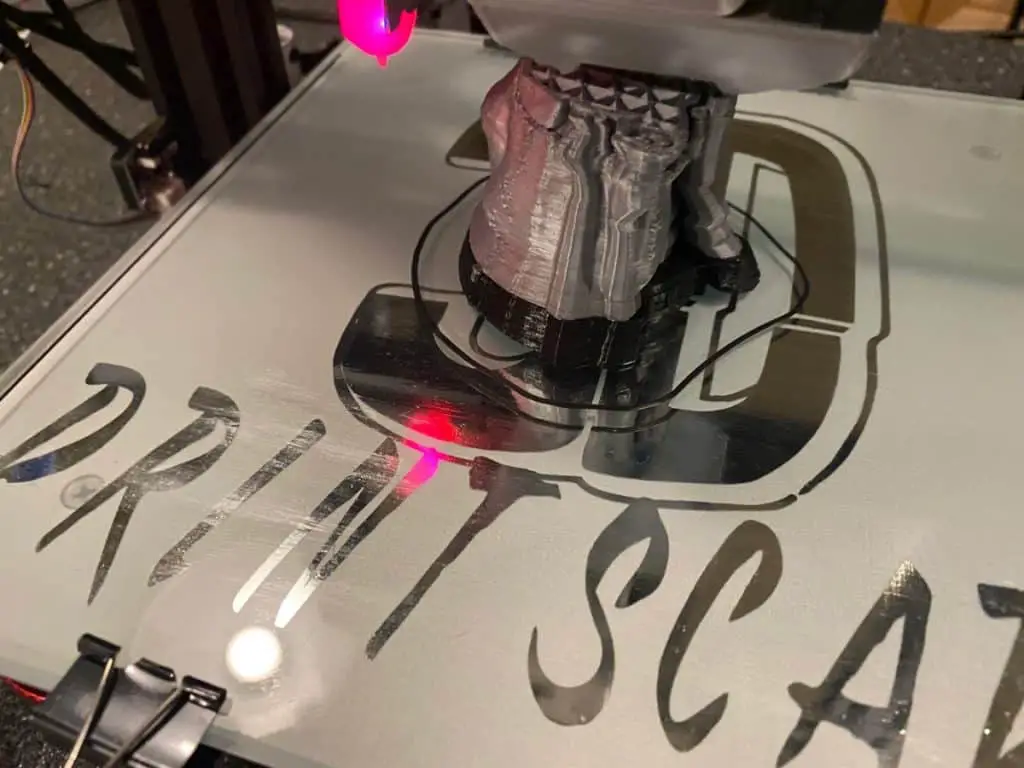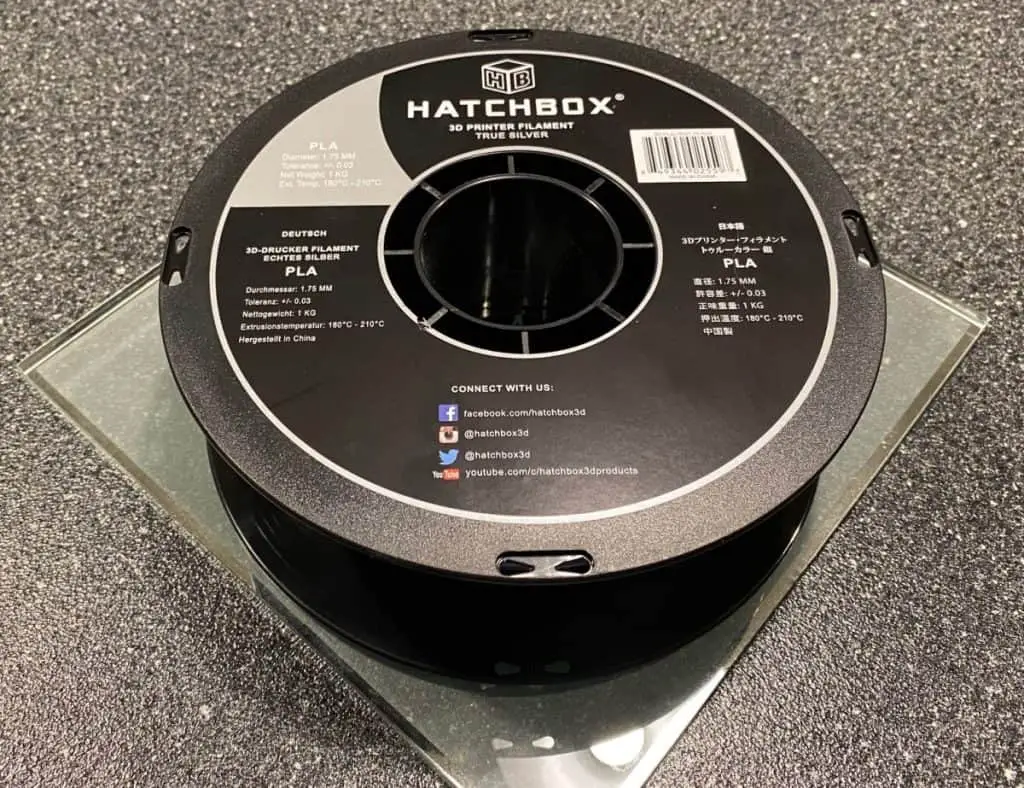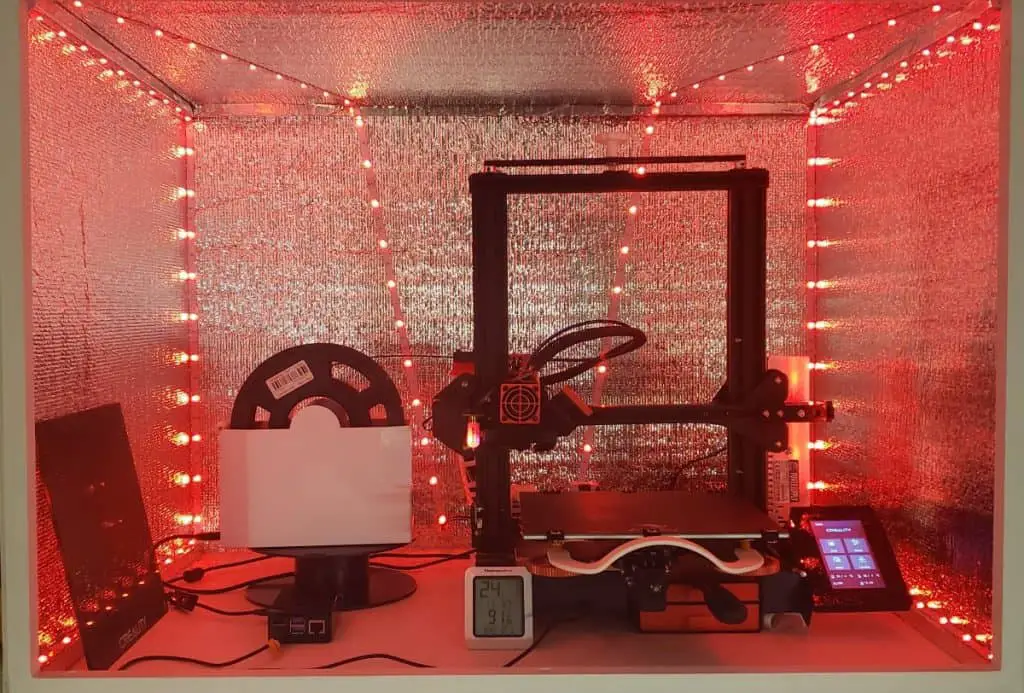When using a 3D printer in an unventilated area, PLA fumes are a cause of worry. You may even experience dizziness, a migraine, and fatigue, so you blame your 3D printer for this. So, can PLA fumes give you a headache?
PLA fumes are unlikely to give you a headache. 3D printers only heat up PLA to its melting point, so the PLA doesn’t give off a lot of fumes. However, certain filament colorants and other additives can give off fumes that may give you a headache if you’re in a small unventilated room.
The rest of this article will explain whether PLA fumes are toxic and if you need to worry about it. I’ll also clarify if 3D printers are safe to use indoors, and I’ll share a few tips that’ll help you avoid fumes your 3D printer may give off.

Are PLA Fumes Toxic?
PLA fumes from 3D printing are somewhat toxic. Some PLA filaments have additives that give off harmful vapors when heated to a certain temperature. Although natural PLA filament fumes aren’t toxic, the tiny particles can irritate your respiratory system regardless.
One study on consumer 3D printers has found that they release toxic fumes and fine particles that can end up in your lungs. To be more specific, they found that tiny PLA and ABS particles may harm respiratory cells.
However, the real issue is that most toxic particles always come from colorants and other additives, not the filament material itself. Since there isn’t exactly a “list of ingredients” on the filament label, it’s hard to tell what manufacturers should be avoided.
Although these mildly toxic fumes aren’t good for you long-term, they’re very unlikely to give you a headache like solder fumes would, for instance.
Also, colored or low-quality PLA filament is more likely to cause you harm than the “natural” variety. You can tell that your PLA filament is natural if it’s white/transparent with a slightly yellow tint. More research is needed to find out how harmful PLA fumes actually are, so you should do everything you can to avoid breathing it in, regardless of the type and color.

Should You Worry About 3D Printer Fumes?
You should worry about 3D printer fumes. Any visible smoke from your 3D printer indicates that the temperature is too high or the filament in question is low-quality. However, invisible 3D printer fumes can also be detrimental to your health.
It’s worth noting that not all fumes coming from your 3D printer are equally harmful. One study has found that caprolactam from nylon-based, styrene from ABS and HIPS, and lactide from PLA filaments can be a health concern.
These carcinogenic compounds won’t cause any harm short term. But they’re a serious concern if you run your 3D printer for 12 hours a day and don’t have any way to deal with all the fumes.
Plus, the study discussed above doesn’t even mention extremely harmful colorants used for polymeric materials. Worse, even natural PLA from renewable biomass isn’t completely safe. Sure, it might be made from agricultural crops, making it likely safe if ingested, but breathing in its fumes is different. Breathing in smoke from burning organic compounds is extremely dangerous for your respiratory health.
Are 3D Printers Safe To Use Indoors?
3D printers are safe to use indoors if the room is well-ventilated and the 3D printer is in an enclosure. Enclosures with carbon filters purify the fumes coming from the filament. Using an open 3D printer in a small room is bad for your health.
It’s safe to say most people use their 3D printers indoors. They’re very delicate machines, so you can’t really take them outside unless it’s sunny.
However, filament fumes are very bad for you in unventilated rooms. This means that you probably don’t want to be near your 3D printer while it’s running. You also want to open the windows to let in fresh air once you’re done with your project.

Tips on Preventing Harm From 3D Printing Fumes
If you’re concerned about filament fumes, you don’t have to dedicate a whole room to the 3D printer.
The following tips will help you ensure your 3D printer won’t be detrimental to your family’s health:
Use Your 3D Printer in a Well-Ventilated Room
Thoroughly ventilating the room with your 3D printer is an easy way to get rid of any fumes. It’s not the most effective method, but it’s free. Plus, it’s very convenient!
I recommend placing your 3D printer underneath a large window. It’ll take a few minutes to move your furniture, but it’s worth it.
Move the 3D Printer Into the Garage
Unless you’re a handyman or are working on a car project, you’re probably not frequently spending much time in the garage. Opening your garage door is an easy way to eliminate toxic fumes.
Moreover, professional 3D printers can take up quite a bit of space. Keeping it in the garage may be your only option if you don’t have any available rooms anyway.
Use a 3D Printer Enclosure
A 3D printer enclosure ensures fumes never enter your room, at least until you open it. Putting your 3D printer inside an enclosure can also improve print quality by eliminating any potential dust that can get trapped between the layers.
Depending on what 3D printer you have, you might be able to find a custom enclosure for it. Otherwise, you can easily build one yourself. This fantastic YouTube video will show you how to do it:
Use Natural Filaments
Using natural filaments like PLA without any colorants and other additives is a great way to reduce potentially toxic fumes. PLA is the safest, most popular, and cheapest filament. Chances are, you’re already using it.
That said, opting for the transparent variant is still something you should do. You can always brush-paint your projects afterward, which can look incredible, and it’ll give your projects a “handmade” appeal.
Related Articles
- Does PETG 3D Printing Create Toxic Fumes?
- What Are FDM Printer Fumes?
- How Small Of An Item Can A 3D Printer Make?
- Is It Safe to 3D Print Indoors?
- How Much Ventilation Does a 3D Printer Need?
Final Thoughts
PLA fumes are unlikely to give you a headache, but they’re still not good for you. You should avoid breathing in any 3D printing fumes to keep your respiratory system safe and healthy.
Placing your 3D printer in a filtered enclosure is one of the best ways to eliminate filament fumes.
Make sure you check out our YouTube channel, and if you would like any additional details or have any questions, please leave a comment below or join us on Discord. If you liked this article and want to read others click here.
